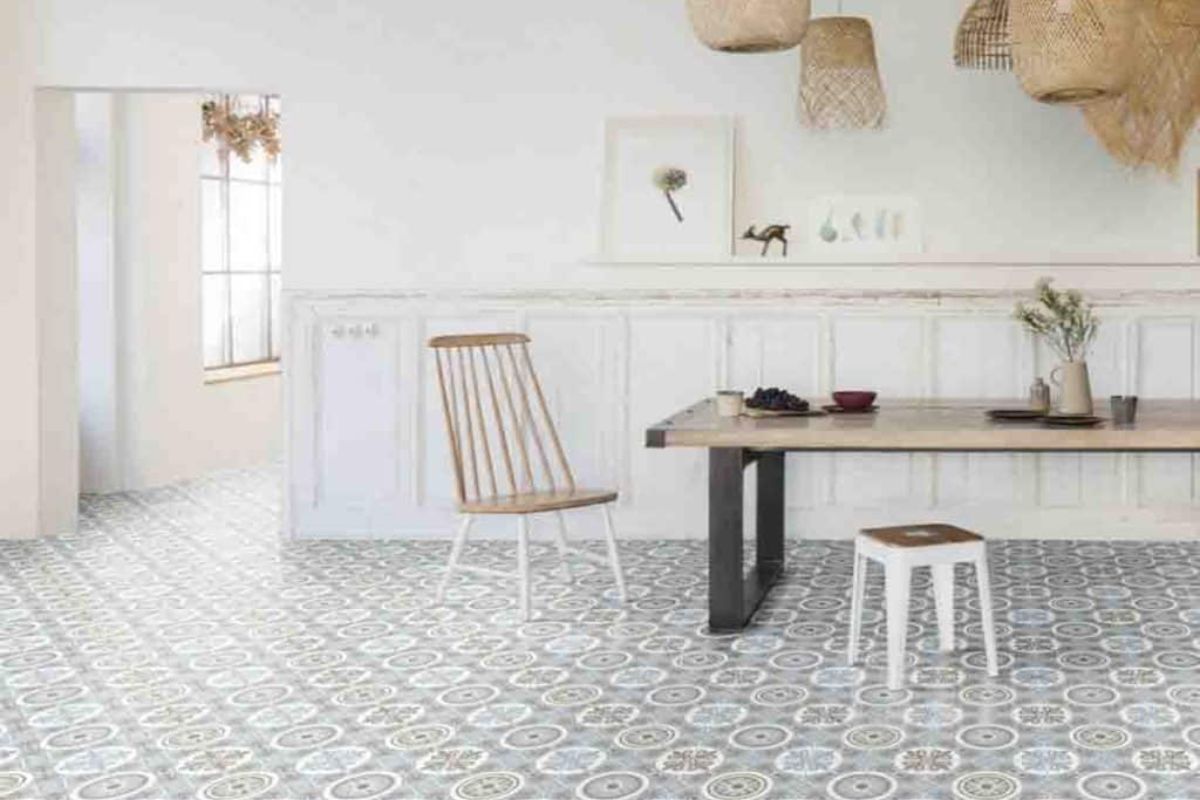Blog
 Innovative applications of linoleum flooring have revolutionized the way we approach modern interior design. With its versatility, sustainability, and aesthetic appeal, linoleum flooring has emerged as a go-to choice for architects, designers, and homeowners seeking creative solutions for contemporary spaces.
In this exploration of innovative applications, we delve into the transformative potential of linoleum flooring across various environments, from residential homes to commercial establishments. By harnessing its unique qualities and embracing cutting-edge design trends, linoleum flooring has redefined the boundaries of interior aesthetics and functionality.
Join us as we uncover the limitless possibilities of linoleum flooring and discover how it continues to shape the landscape of modern design, one innovative application at a time.
Innovative applications of linoleum flooring have revolutionized the way we approach modern interior design. With its versatility, sustainability, and aesthetic appeal, linoleum flooring has emerged as a go-to choice for architects, designers, and homeowners seeking creative solutions for contemporary spaces.
In this exploration of innovative applications, we delve into the transformative potential of linoleum flooring across various environments, from residential homes to commercial establishments. By harnessing its unique qualities and embracing cutting-edge design trends, linoleum flooring has redefined the boundaries of interior aesthetics and functionality.
Join us as we uncover the limitless possibilities of linoleum flooring and discover how it continues to shape the landscape of modern design, one innovative application at a time.
Importance of understanding linoleum flooring for modern
In today’s ever-evolving world of interior design and sustainable living, understanding linoleum flooring holds significant importance for homeowners, designers, and architects alike. Here’s why:
Sustainability: Linoleum flooring is crafted from natural, renewable materials such as linseed oil, cork dust, wood flour, and resins. Unlike many other flooring options that rely on non-renewable resources or harmful chemicals, linoleum is biodegradable, low in volatile organic compounds (VOCs), and environmentally friendly. Its sustainable composition aligns with the growing demand for eco-conscious building materials and contributes to healthier indoor environments.
Durability and Longevity: Linoleum flooring is renowned for its durability and longevity. It withstands heavy foot traffic, resists scratches, dents, and stains, and maintains its appearance even in high-traffic areas. Understanding the durability of linoleum helps homeowners and designers make informed decisions about flooring choices, ensuring that their investment withstands the test of time and retains its aesthetic appeal for years to come.
Versatility in Design: Linoleum flooring offers a vast array of design options, including classic patterns, contemporary styles, and vibrant color palettes. From retro-inspired motifs to modern geometric designs, linoleum can be customized to complement any interior aesthetic or design theme. Its versatility allows for creative expression and flexibility in designing functional and visually appealing spaces.
Health and Well-being: Linoleum flooring contributes to a healthier indoor environment by offering hypoallergenic and antimicrobial properties. It inhibits the growth of mold, mildew, and bacteria, making it an ideal flooring choice for allergy sufferers and individuals with respiratory sensitivities. Understanding the health benefits of linoleum fosters environments that promote well-being and comfort for occupants.
Ease of Maintenance: Linoleum flooring is easy to clean and maintain, requiring simple care routines to preserve its beauty and integrity. Regular sweeping, mopping, and occasional polishing are all that’s needed to keep linoleum floors looking their best. Its low-maintenance nature reduces the time and effort required for upkeep, allowing homeowners and facility managers to focus on other aspects of maintenance and care.
Cost-Effectiveness: Linoleum flooring offers excellent value for money compared to other flooring options. Its upfront cost is typically lower than hardwood, tile, or stone flooring, making it a budget-friendly choice for residential and commercial projects. Additionally, its long lifespan and minimal maintenance requirements translate to cost savings over time, making linoleum a smart investment for modern spaces.
The Benefits of Linoleum Flooring
Sustainability: Linoleum flooring is crafted from natural, renewable materials such as linseed oil, cork dust, wood flour, and resins. Unlike many other flooring options that rely on non-renewable resources or harmful chemicals, linoleum is biodegradable, low in volatile organic compounds (VOCs), and environmentally friendly. Its sustainable composition aligns with the growing demand for eco-conscious building materials and contributes to healthier indoor environments.
Durability and Longevity: Linoleum flooring is renowned for its durability and longevity. It withstands heavy foot traffic, resists scratches, dents, and stains, and maintains its appearance even in high-traffic areas. The resilient nature of linoleum makes it ideal for use in residential, commercial, and institutional settings where durability and performance are paramount.
Versatility in Design: Linoleum flooring offers a vast array of design options, including classic patterns, contemporary styles, and vibrant color palettes. From retro-inspired motifs to modern geometric designs, linoleum can be customized to complement any interior aesthetic or design theme. Its versatility allows for creative expression and flexibility in designing functional and visually appealing spaces.
Health and Well-being: Linoleum flooring contributes to a healthier indoor environment by offering hypoallergenic and antimicrobial properties. It inhibits the growth of mold, mildew, and bacteria, making it an ideal flooring choice for allergy sufferers and individuals with respiratory sensitivities. Understanding the health benefits of linoleum fosters environments that promote well-being and comfort for occupants.
Ease of Maintenance: Linoleum flooring is easy to clean and maintain, requiring simple care routines to preserve its beauty and integrity. Regular sweeping, mopping, and occasional polishing are all that’s needed to keep linoleum floors looking their best. Its low-maintenance nature reduces the time and effort required for upkeep, allowing homeowners and facility managers to focus on other aspects of maintenance and care.
Cost-Effectiveness: Linoleum flooring offers excellent value for money compared to other flooring options. Its upfront cost is typically lower than hardwood, tile, or stone flooring, making it a budget-friendly choice for residential and commercial projects. Additionally, its long lifespan and minimal maintenance requirements translate to cost savings over time, making linoleum a smart investment for modern spaces.
Linoleum Flooring vs. Other Flooring Option
Linoleum vs. Vinyl Flooring:
- Composition: Linoleum is made from natural materials such as linseed oil, cork dust, wood flour, and resins, while vinyl flooring is composed of synthetic materials such as PVC (polyvinyl chloride) and plasticizers.
- Sustainability: Linoleum is biodegradable and environmentally friendly, whereas vinyl flooring is not biodegradable and may release harmful chemicals during production and disposal.
- Durability: Linoleum is resilient and durable, with a lifespan of 20-40 years, while vinyl flooring is less durable and may show signs of wear and tear over time.
- Maintenance: Linoleum requires regular cleaning and occasional polishing to maintain its appearance, while vinyl flooring is low-maintenance and easy to clean with regular sweeping and mopping.
- Cost: Linoleum may have a higher upfront cost compared to vinyl flooring, but its durability and longevity make it a cost-effective investment in the long run.
- Composition: Linoleum is made from renewable materials, while hardwood flooring is harvested from trees and may contribute to deforestation.
- Sustainability: Linoleum is considered more environmentally friendly than hardwood flooring due to its renewable composition and biodegradability.
- Durability: Hardwood flooring is known for its durability and longevity, but it can be prone to scratches, dents, and water damage, whereas linoleum is resilient and resistant to wear and tear.
- Maintenance: Linoleum is easier to maintain than hardwood flooring, requiring less frequent refinishing and sealing. Hardwood flooring may require more intensive maintenance to preserve its appearance and integrity.
- Cost: Hardwood flooring typically has a higher upfront cost compared to linoleum, but its aesthetic appeal and long-term value may justify the investment for some homeowners.
Installation Techniques for Linoleum Flooring
Subfloor Preparation:
- Ensure that the subfloor is clean, dry, and free of debris before installing linoleum flooring.
- Repair any cracks, holes, or uneven areas in the subfloor to create a smooth and level surface.
- Conduct moisture testing to determine if the subfloor is adequately dry and suitable for linoleum installation.
- Allow the linoleum flooring materials to acclimate to the room’s temperature and humidity levels for at least 48 hours before installation.
- Store the linoleum rolls or tiles flat in the installation area, away from direct sunlight and extreme temperature fluctuations.
- Choose a high-quality adhesive recommended by the linoleum manufacturer for optimal bonding and performance.
- Consider the type of subfloor and installation method when selecting the adhesive, whether it’s a water-based or solvent-based adhesive.
- Measure the installation area carefully and plan the layout of the linoleum flooring to minimize waste and achieve a balanced appearance.
- Use a sharp utility knife or linoleum cutter to cut the linoleum sheets or tiles to the desired size and shape.
- Dry-fit the linoleum pieces to ensure proper alignment and fit before applying adhesive.
- Follow the manufacturer’s instructions for mixing and applying the adhesive to the subfloor.
- Use a trowel to spread the adhesive evenly over the subfloor, working in small sections to prevent premature drying.
- Allow the adhesive to set for the specified amount of time before placing the linoleum flooring on top.
- Roll out the linoleum flooring sheets or position the tiles carefully onto the adhesive-coated subfloor.
- Use a roller or hand roller to press the linoleum firmly into place, ensuring good contact with the adhesive and eliminating air bubbles.
- Pay attention to seams and edges, ensuring they are tightly joined and sealed to prevent moisture infiltration and separation over time.
- Once the linoleum flooring is installed, consider applying a protective sealant or finish to enhance durability and stain resistance.
- Follow the manufacturer’s recommendations for the type of sealant or finish suitable for linoleum flooring and apply it evenly using a clean applicator.
- Remove any excess adhesive or sealant from the surface of the linoleum flooring using a damp cloth or sponge.
- Allow the installed linoleum flooring to cure and set according to the manufacturer’s guidelines before allowing foot traffic or placing heavy objects on top.
- Implement a regular cleaning and maintenance routine to preserve the beauty and integrity of the linoleum flooring over time.
Maintaining Your Linoleum Flooring
Regular Cleaning Routine:
- Sweep or vacuum the linoleum flooring regularly to remove dust, dirt, and debris.
- Use a soft-bristled broom or vacuum with a brush attachment to prevent scratching the surface of the flooring.
- Consider using a microfiber mop for damp mopping to pick up any remaining dirt or residue.
- Address spills and stains on linoleum flooring promptly to prevent them from setting or spreading.
- Use a mild detergent solution or specialized linoleum cleaner diluted in warm water to spot clean affected areas.
- Gently scrub the stained area with a soft cloth or sponge, avoiding abrasive cleaners or harsh chemicals that may damage the linoleum surface.
- Place doormats at entryways to trap dirt, moisture, and debris before it reaches the linoleum flooring.
- Use furniture pads or felt protectors under the legs of chairs, tables, and heavy furniture to prevent scratches, dents, and indentations on the flooring.
- Avoid dragging or sliding heavy objects across the linoleum surface, as this can cause damage or wear over time.
- Linoleum flooring is moisture-resistant but not waterproof, so avoid excessive moisture exposure and standing water on the surface.
- Wipe up spills and moisture promptly using a clean, dry cloth or towel to prevent water damage and warping of the flooring.
- Use mats or rugs in areas prone to spills, such as kitchens and bathrooms, to protect the linoleum flooring from water damage.
- Periodically deep clean the linoleum flooring using a neutral pH cleaner or linoleum-specific floor polish.
- Follow the manufacturer’s recommendations for cleaning products and techniques to avoid damaging the linoleum surface.
- Consider applying a protective sealant or finish every few years to enhance durability and prolong the lifespan of the flooring.
- Refrain from using abrasive cleaners, scouring pads, or steel wool on linoleum flooring, as these can scratch or dull the surface.
- Avoid using ammonia-based cleaners, bleach, or solvent-based products, as they may discolor or damage the linoleum finish.
- Periodically inspect the linoleum flooring for signs of wear, damage, or deterioration, such as scratches, scuffs, or discoloration.
- Address any maintenance issues or repairs promptly to prevent further damage and ensure the long-term integrity of the linoleum flooring.




